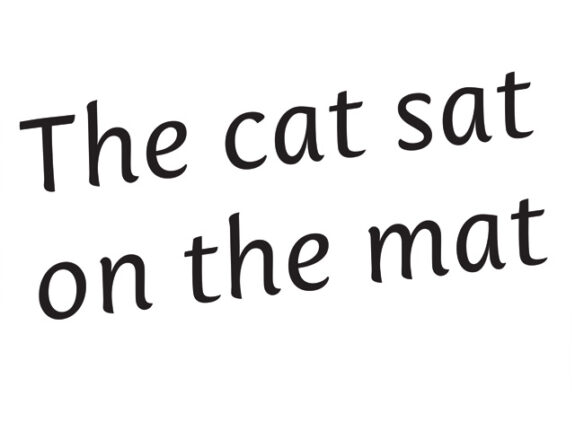
Dyslexia and learning to read and write
Unpicking history
For English-speaking children, learning to read and write the sounds of speech or phonemes with the alphabet means learning to link:
- A phoneme, either ‘said’ with part of its sound as by the canons of Systematic Synthetic Phonics or or by letter names which proponents of synthetic phonics refuse to countenance. The traditional letter names have a utility. They make it easier to address the quart-in-a-pint-pot problem of the English system in a consistent way. The familiar letter names help to describe in simple ways what is happening in all of the 500 or so graphemes of written English – if this is not disallowed;
- The long vowels in he, haw, hah, who, the diphthongs like those in hay, high, hoy, hoe, how, and high, the six short vowels in hit, hen, hat, hut, hot, and hood, and the first, unstressed vowel in away and asleep, the only vowel in the two commonest words in English, a and the, both known as ‘functors’, (words whose only role is in relation to a word or phrase or the sentence as a whole), using different letters for the same vowel, known as ‘schwa‘;
- The stop consonants in pea, bee, tea, Dee, cale and gale, the nasals in may and nay, the fricatives in say and zoo, the liquids in raw and law, the glides in woo and you, the digraphs as in thin and path and shin and wish, the affricates in chin and John, or with three letters in witch and badge, the doubled letters for single sounds in hammer and sorry, doing different things in successive syllables, the special cases of H only used before the vowel in hen, high, how, and of X used for two sounds after the vowel, as in fox, fix, mix, hoax and coax, and 100 or so other cases;
- In many cases, the relation between the position of a letter in the word and a given phoneme, as one letter in see and two in mess, or affecting only one of the vowel letters, A, E, I, O or U, in the case of ‘silent E’, not silent and in the wrong order in middle and little;
- The special cases of TION in station and other such words and TIO in Horatio, all loaned from Latin, where a three or four letter sequence represents one or two unstressed syllables;
- A number of other exceptional cases, often with only a single exemplar, like the short E sound in bury (exceptional also in having only one R), in contrast to merry, ferry, wherry, Jerry, Derry. and xenophobe and psyche loaned from Greek hundreds of years ago but preserving the written form of the Greek which, unlike English, allows KS and PS at the beginning of a syllable;
- The marginally different system for a hundred or so other functors and the system of contractions, written with the apostrophe, as in wouldn’t and would’ve;
- The geometry of a letter in terms of lines and curves or parts of something like a circle;
- The way the letter is formed by hand (always starting at the top, sometimes initially moving leftwards, as with lower case A and capital S and O), often with a stroke joining one lower-case letter to the next.
To learn this, the child has to unpick history. Not a trivial task. To my way of thinking, not to recognise that learning all of this is anything other than an enormously demanding task is just intellectually dishonest. The complexities here are all denied by proponents of ‘Systematic Synthetic Phonics’, or SSP.
From hearing to writing
What is heard as speech is a continuous stream with no separation between the words or speech sounds, other than in pauses. There are clues about the words and syllables from the prosody or rhythm, the changing levels of stress and the rises and falls of the intonation. But where the individual sounds begin and end is not well-defined at all in everyday, running speech.
The unpicking
Teachers have found clever ways of squeezing the considerable complexity here into a small number of hours. But the obvious difficulty of this is not swept away by the slogans of SSP. It is possible to systematise the commonest graphemes (letter sound relations). But this only works for an arbitrary subset of these, defined by the 26 letters of the alphabet. There are actually only quite a small number of entirely simple cases like cat, dog, sat and mat. With 44 sounds in most ‘standard’ varieties of English today (on many counts) and only 26 letters, exceptions are made for the vowels in good, food, and put, the U in bury, the EIGH in eight, the N’T in wouldn’t, and four hundred and seventy something other such cases. Or fudges are found.
I still remember the teacher who came to teach me for one day while I was off school for nine months with bovine tuberculosis. He seems to have unpicked for me what had been a mystery of for me for the preceding two years of school: What was the relation between letters, sounds and words? He opened a book for me in the most literal of senses. Without his help, my life would almost certainly have proceeded quite differently.

